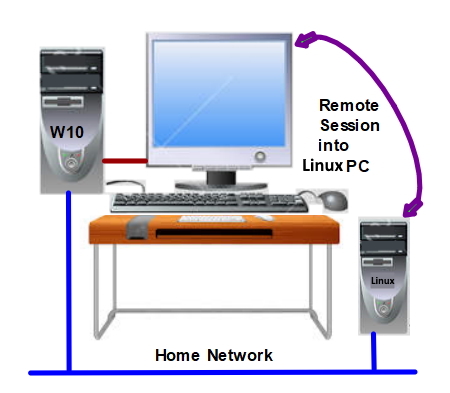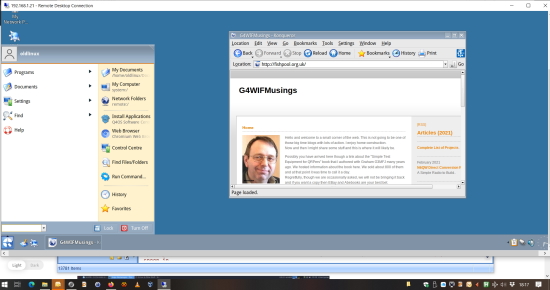Home
March 2021 - UpCycling an old mystery computer
I have no idea what the old computer actually was. I had challenged myself to see if I could repeat the same remote access trick as before and this time make it a Linux PC. - Just to see if I could.
I have no idea at the moment what I would use if for in terms of remote access. What I have shown though is that with a really old "road kill computer" you can still use it for proper work.
The computer came from the deepest depths of my garage. It had a 40 Gb hard drive and one gigabyte of memory. I was later able to confirm that it contained a 32 bit processor. There lies the problem because in recent times the bigger names in the Linux world have rather given up on 32 bit architecture.
If you aren't sure whether your PC is 32 or 64 bit refer to this article.
I like Ubuntu and it comes in various flavours that depend on the platform used. Lower powered computers run really well on the "lighter" LuBuntu and XUbuntu distributions. There is no new 32 bit versions of them now.
Looking further afield there is a nice Linux called Q4OS which has Ubuntu underpinnings - and it comes in a 32 bit variant. So that is what I installed on the ancient machine. And it actually worked pretty well.
Just to remind you of the setup:

Once Q4OS was installed I made the alterations mentioned in this article.
The acid test was to confirm that I could now remote into that new PC from Windows 10.
At the end of this I do have a linux PC that I can run without the need to have an additional screen and keyboard. (I might eventually figure out a use for it!).
It will run applications completely internally and not steal any processor time from the main Windows 10 PC.
In many ways this idea is quite an old one. Those with some gray hairs who were around at the start of the home computer revolution will recall the BBC Micro. Many of us owe our later livelihood and career to that PC and it had options of "2nd Processors".
They came in 6502 and Z80 variants which meant that even grown up operating systems like CP/M was possible. This was the dominant small office computer operating system before MSDos became popular.

But if a modern "2nd processor" is not required, then the use of operating systems like Q4OS show that a PC based on a "computing dinosaur" can still do great work.
